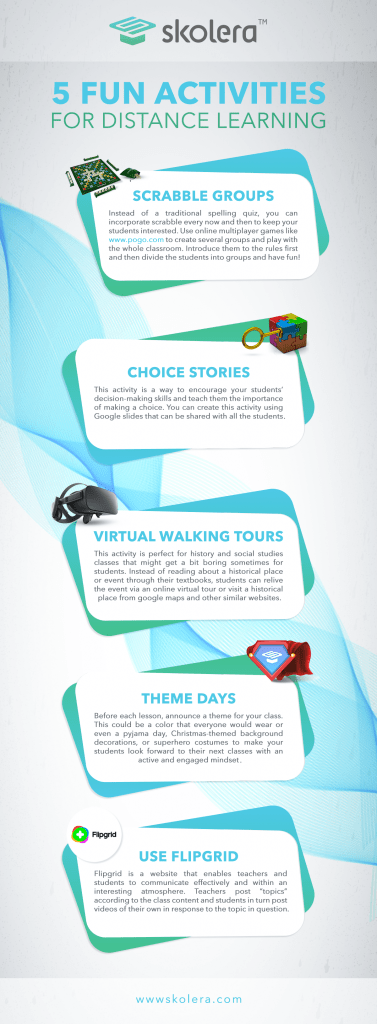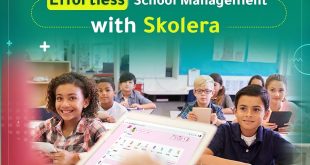How to make remote learning fun? What even makes students bored in the first place? What are some activity ideas to boost student engagement? Read on to learn more about remote learning.
Just like the rest of us, school students are also tired of online classes and this newly forced remote learning experience. Although they hate to admit it; most students do not actually want to sit in front of a computer screen all day every day.
In fact, they miss the real classroom experience, meeting their friends, and having the usual busy school day. As a teacher, you can choose to make your class more enjoyable for your students and rekindle their curious minds. After all, online classes should not be a replica of real classes.
Thanks to the wonderful asset of the Internet, the possibilities to make your class fun are endless.
In this guide, you will learn about how to make remote learning fun, what makes students less keen to engage in online classes and you will benefit from new activity ideas, tips, and questions to ask to make remote learning more engaging for your students and prevent the Zoom fatigue that affects all students nowadays. No teacher wants an idle, uninterested group of students. Creative and engaging students are what you should aim for in your classroom.
Get started Skolera for FREE
Why Do Students Get Bored in the First Place?
- Little teacher-student interaction
Many teachers tend to transfer their real classes to online classes with little change. They mistakenly believe that students would actually be following the class when a teacher is talking most of the lesson while the students are only listening. However, online learning should never be a replica of real classes for several reasons.
In online classes, there is usually a lack of interaction between the teacher and the students; they are not encouraged to ask questions or contribute to the class. Students can easily feel discouraged to engage when they feel like the teacher is only there to take the mic and gabble on for the whole lesson.
- Environment is discouraging
For most students, remote learning means sitting in their bedrooms on their desks or even in their beds! Does that sound like an appropriate learning environment to you? Definitely not!
An ideal learning environment for a student should be a place where students are encouraged to think, create and engage; not feel like they want to go to sleep.
When students are attending classes in their beds, their minds are not ready to accept new information. It is rather the complete opposite in which students would prefer playing video games, going on the internet, or watching movies.
- Lack of student-student interaction
A study by Kolloff in 2011 concluded that student interaction “is vital to building community in an online learning environment, which supports productive and satisfying learning, and helps students develop problem-solving and critical thinking skills.”
Normally, in traditional classes, student interaction would be present without much effort on the part of the teacher.
In an online setting, the case is a whole lot different as students do not usually interact with their peers during the lesson where the focus is mainly preserved for delivering the lesson content. This lack of interaction could definitely discourage students from being active during an online class.

Read this article about school remote learning tips.
How To Make Remote Learning Fun At Home

1) Gamify your class
Game-based learning is the process of integrating some game principles into the learning experience. Its ultimate aim is to encourage students to engage, work in teams and take part in strategic thinking. Implementing game-based learning in your online classes is a sure way to make sure your students are back on track and interested to learn.
One of the necessary elements in gamifying your class is introducing the concept of digital badges as a form of an incentive where your students can trace their progress and be proud of what they have achieved so far.
This is also a good way to boost their confidence and creative skillset. EHL suggests general rules for the success of gamification in the classroom; the game should be “realistic, fun, competitive and aligned with the learning outcomes” of the class content.
These criteria could be your checklist for when you decide to create a game based on your lesson content.
Join Skolera Now for FREE
Watch this video to gain ideas about encouraging creativity in your classroom.
2) Scrabble groups
For English classes, scrabble tournaments will surely boost your class when it comes to spelling and vocabulary skills. Instead of a traditional pop spelling quiz, you can incorporate scrabble every now and then to keep them interested.
Usually, this game is more interactive in a real class setting. However, you can alter some aspects of the game to suit your online environment. For example, you can use pogo.com to create several groups and play the game online. Introduce them to the rules first and then divide the students into groups and let them do the rest!
3) Choice stories
This activity is simply a way to encourage your students’ decision-making skills and teach them the importance of making a choice. This activity needs proper planning on the part of the teacher but it will definitely be worthwhile and effective for your online classroom.
By the end of the class, your students will thank you for allowing them a new perspective in their History, Science, or even Mathematics classes. Watch this step-by-step video on how to create this activity using Google slides. Also, check this blog that discusses the nature of this activity in full detail.
4) Virtual walking tour
This activity is perfect for history and social studies classes that might get a bit boring sometimes for students. Instead of reading about a historical place or event through their textbooks, students can relive the event via an online virtual tour or visit a historical place from Google Maps and other similar websites. This blog article showcases a plethora of resources for teachers that want to get their students acquainted with astronomy, natural life, museums, historical places, etc.
5) Theme days
This strategy is a small way to make your online classes a little more fun for your younger students. Before each lesson, announce a theme for your class to abide by. This could be a colour that everyone would wear or even a pyjama day, Christmas-themed background decorations or superhero costumes to make your students feel ready and look forward to their next classes with an active and engaged mindset.
Read here: 5 Qualities To Be Your Students’ Favourite Teacher.
Sign up for free
6) Make use of breakout rooms to encourage student interaction
As discussed before, the lack of student-student interaction is usually what discourages students from online classes and keeps them idle. It would be better if you make use of breakout rooms in Zoom to allow students to engage with each other and discuss class content.
Try to limit each breakout room session to 3-5 minutes to prevent students from taking their discussions too far. You can also use this option when you want to incorporate a pair-based activity and encourage cooperative learning for intervals of the lesson.
7) Use Flipgrids for more interaction
Flipgrid is a website that enables teachers and students to communicate effectively and within an interesting atmosphere. It is a great remote learning tool as it allows participants to record short videos within a shared platform under a certain discussion board. Essentially, teachers post “topics” according to the class content and students in turn post videos in response to the topic in question.
One of the benefits of this tool is that it gives students the time to answer, thus eliminating the pressure of having to answer on the spot. It is also a fun tool that allows its users to post emojis, stickers, and text along with their posted videos. Students will feel like they are engaging in a non-traditional classroom setting while benefiting at the same time.
You can use Flipgrid in your literature classes to allow students to share book analyses and commentary. Also, Flipgrid can be used for foreign language classes to share new vocabulary and benefit from cooperative learning. This tool is definitely a sure way to measure your students’ presentational and speaking skills.
Watch this tutorial video to get you started on the basics of using Flipgrid.
Fun Questions To Ask Students During Remote Learning
1.Remember Bloom’s Taxonomy when you are asking questions. This will help you organize your questions into categories according to levels of difficulty and will give you a chance to identify gaps in understanding during your revision classes.
2.Reply to their responses using more questions to keep your students thinking and encourage them to reevaluate their answers.
3.Allow other students to evaluate and reply to their peers. This will encourage students’ critical thinking skills and get them to speak up more.
4.It is important to specify a period in each lesson for asking questions. This will help you leave 2-3 minutes for students after each question to give them space to ponder the question and reply in an organized manner. No need to rush your questions all at a time!
This article tackled the queries about how to make remote learning fun, what makes students get bored and solutions for teachers to start boosting their classes. Remote learning does not have to be systematic and one-sided. Try as much as possible to use the aforementioned teaching activities, games, and question tips to make your class more enjoyable and beneficial. Your students will thank you later!
Create Free Account
Sources:
Game-based learning techniques to facilitate online teaching. Hospitality News & Business Insights by EHL. (n.d.). https://hospitalityinsights.ehl.edu/game-based-learning-online-teaching
https://acrl.ala.org/IS/wp-content/uploads/2014/05/spring2015.pdf
Nikki Katz on March 20, 2020 .contest-social .share-links svg. (2020, March 29). Schools Are Hosting Virtual Theme Weeks to Cheer Up Quarantined Kids. We Are Teachers. https://www.weareteachers.com/virtual-theme-week/
Asking Questions to Improve Learning. Center for Teaching and Learning. (2021, March 2). https://ctl.wustl.edu/resources/asking-questions-to-improve-learning/
 Skolera LMS Blog Educational Technology Articles and News
Skolera LMS Blog Educational Technology Articles and News




